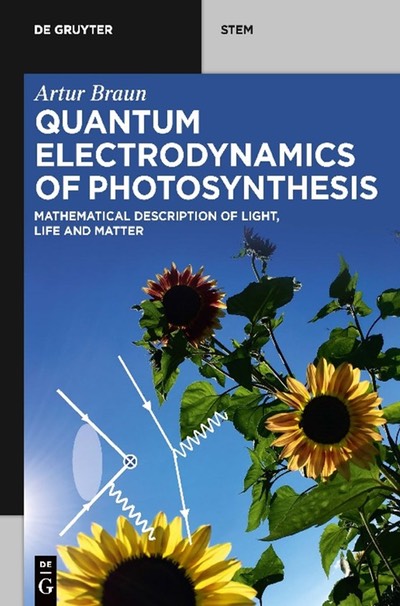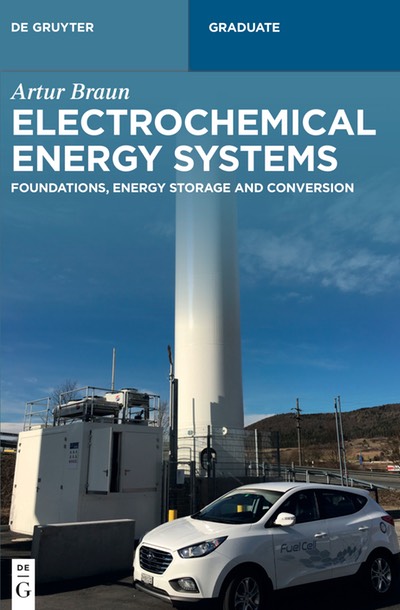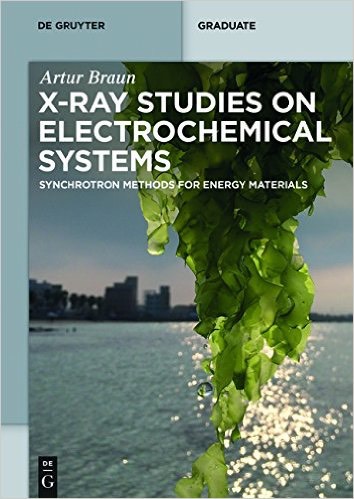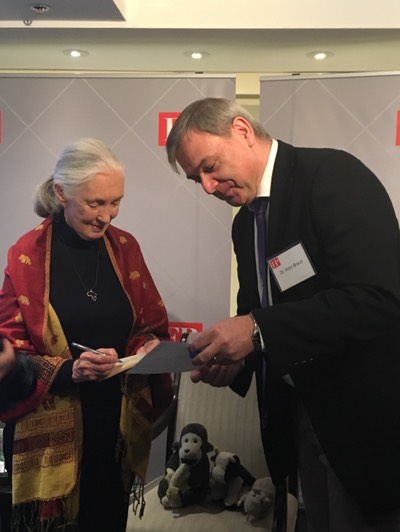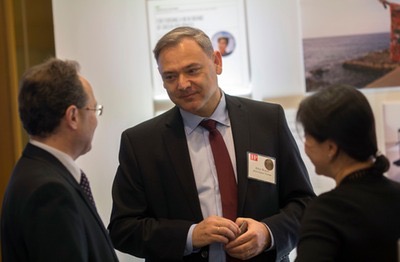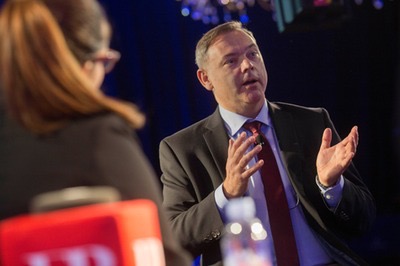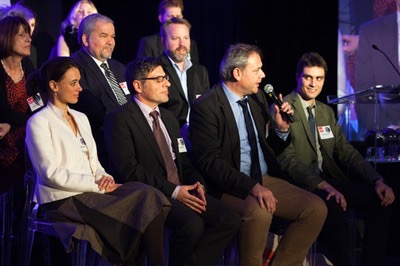During my postdoc time in Berkeley as battery researcher with Prof. Elton J. Cairns, I was associated with the protein spectroscopy of Prof. Stephen P. Cramer group from UC Davis, and I enjoyed a lot the work on hydrogenases, photosystem II and nitrogenases. When in 2007 at Empa the chance arose that I could do photocatalytic water splitting, I took this opportunity specifically because of its potential to combine it with work on photosynthesis. Eventually this possibility materialized and we designed photo electrodes from metal oxides, which we further functionalized with light harvesting proteins. Specifically, we put algal/cyanobacterial C-phycocyanin on iron oxide photoelectrodes and found that this enhances the photocurrent by a factor of two or better.
The first paper on this topic in my group was published in Advanced Functional Materials in 2012: D.K. Bora, A.A. Rozhkova, K. Schrantz, P.P. Wyss, A. Braun, T. Graule, E.C. Constable, Functionalization of Nanostructured Hematite Thin-Film Electrodes with the Light-Harvesting Membrane Protein C-Phycocyanin Yields an Enhanced Photocurrent, Adv. Funct. Mater. 2012, 22 (3) 490–502, http://onlinelibrary.wiley.com/doi/10.1002/adfm.201101830/abstract .
Following this paper in AFM, we were invited by the EES Editor N:S. Lewis to write a review on the matter, which we did. “In rust we trust” provided a glimpsy oversight about the idea that organic matter for artificial photosynthesis eventually has to be harnessed on some sort of solid support, notwithstanding that alternative approaches may eventually come up. But the interfaces between the organic or bio-organic matter and condensed matter electrodes would constitute bio-electric interfaces.
D.K. Bora, A. Braun, E.C. Constable, “In rust we trust”. Hematite the prospective inorganic backbone for artificial photosynthesis, Energy Environ. Sci., 2013,6, 407-425. http://pubs.rsc.org/en/content/articlelanding/2012/EE/C2EE23668K
In the course of our work on solar water splitting it became more and more clear how little is known about the chemical and physical processes that take place at the surface of an inorganic material, interfacing with bio-organic or even living matter. Meanwhile our work had progressed, with the support from several funding programmes in Switzerland, including SCIEX, COST plus a grant from the VELUX STIFTUNG.
Invited by Wolfgang Eberhardt and Clemens Heske, we then wrote a quite large paper on the use of synchrotron radiation based x-ray and electron spectroscopy methods for the large field of natural and artificial photosynthesis, for their special issue in the Journal of Electron Spectroscopy and Related Phenomena. The paper is sort of a review and covers the materials science perspective and also the molecular perspective. It is one of the most downloaded papers in JESRP of Summer/Fall 2014 according to science direct.
D. K. Bora, Y. Hu, S. Thiess, S. Erat, X. Feng, S. Mukherjee, G. Fortunato, N. Gaillard, R. Toth, K., Gajda-Schrantz, W. Drube, M. Grätzel, J. Guo, J. Zhu, E.C. Constable, D.D. Sarma, H. Wang, A. Braun, Between Photocatalysis and Photosynthesis: Synchrotron spectroscopy methods on molecules and materials for solar hydrogen generation, J. Electron Spectr. Rel. Phenom. 2013, 190 A, 93-105. http://www.sciencedirect.com/science/article/pii/S0368204812001600
After I attended the ACIN 2014 conference in Namur, which was organised by KU Leuven's Bao-Lian Su and to whom I owe more than just my connection with the COST TD1102 Action on bio-electric chips (PHOTOTECH), another invitation for a paper came in, this time a concept paper for Chemistry, A European Journal. This paper contains the first valence band XPS data on phycocyanin films deposited on iron oxide single crystals. These are Fe3p resonant valence band spectra which were recorded in 2013 at SSRL in dark and in light condition.
A. Braun, F. Boudoire, D. K. Bora, G. Faccio, Y. Hu, A. Kroll, B. S. Mun, S. T. Wilson, Biological components and bio-electronic interfaces of water splitting photoelectrodes for solar hydrogen production, Chem. Eur. J. 2014, 20, 2 – 14 (invited concept paper), http://onlinelibrary.wiley.com/doi/10.1002/chem.201405123/abstract
Moreover, the paper contains (near) ambient pressure XPS spectra on a cyanobacterial bio-film (thanks to Alexandra Kroll from eawag) of the valence band. This was a full operando study where we had electrified the film in a 2-electrode arrangement from 0 Volt to 1.7 Volt and exposed it to 150 mTorr water vapor pressure in dark and in light condition. You got to read this paper and look into these spectra. You clearly see how the valence band maximum and also the curvature changes as a function of these photoelectrochemical opereation conditions. The first photoelectrochemical XPS spectra of a photosynthetic biofilm under physiological conditions.
Latest news was that I had a sabbatical with the Lab of Prof. Wonhyoung Ryu at Yonsei University where I learnt how to look into thylakoid mebranes. This trip was funded by the Swiss National Science Foundation and by Empa, 1st August to 31st October 2017.
BL932_biofilm_AP_XPS
Algal biofilm under investigation with synchrotron x-ray spectroscopy under photoelectochemical and physiological conditions. The flood light is supposed to illuminate the biofilm as much as possible.
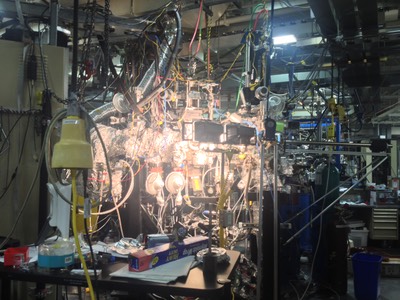
BL 9.3.2. end station at Advanced Light Source in Berkeley.
